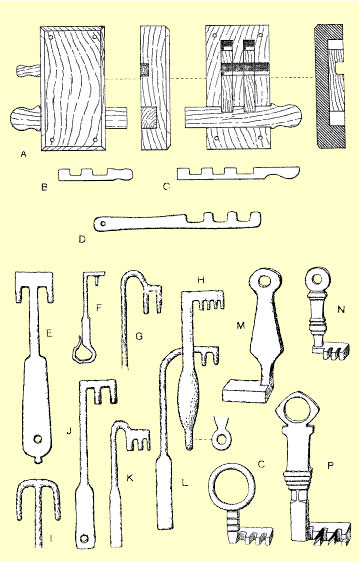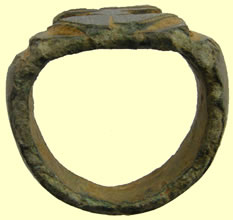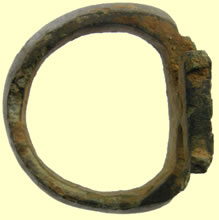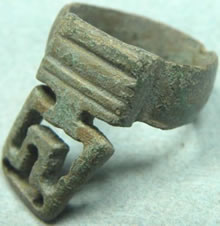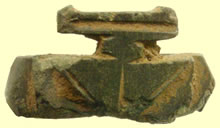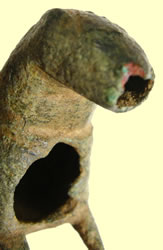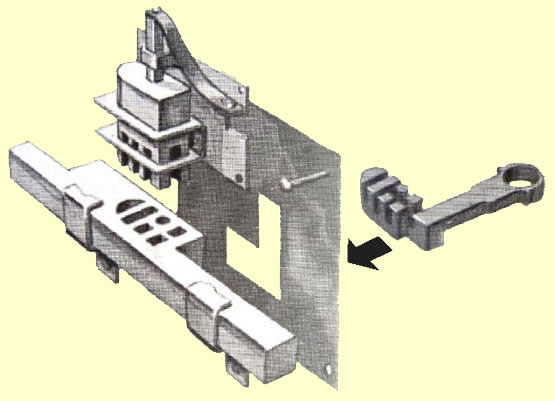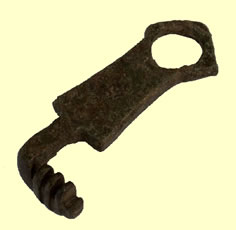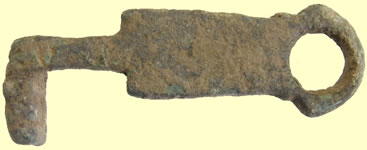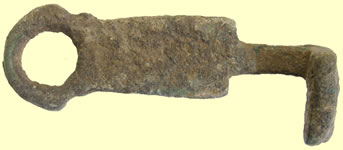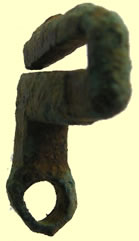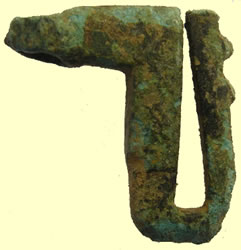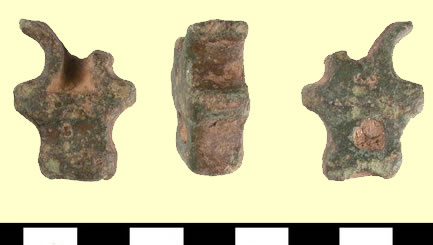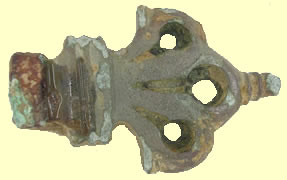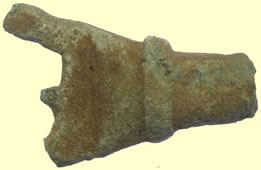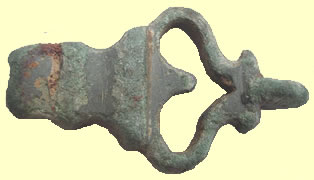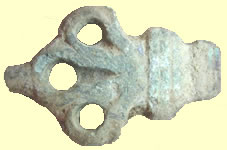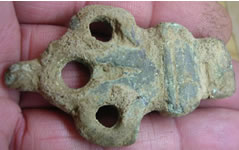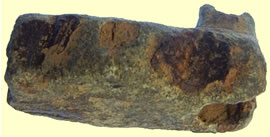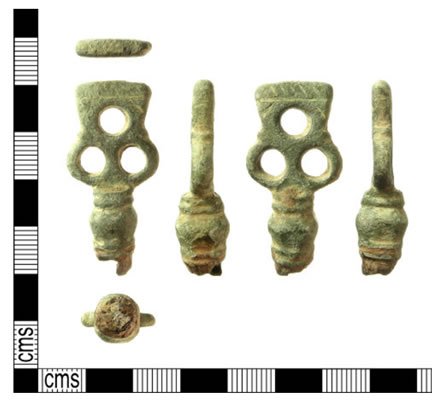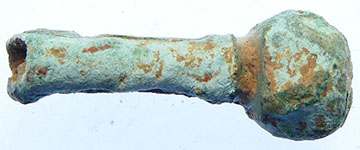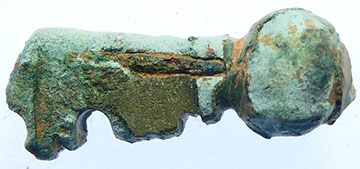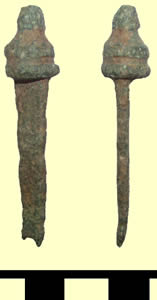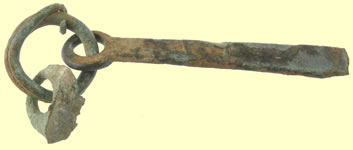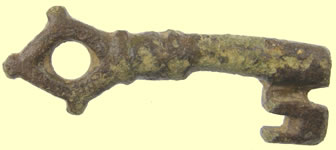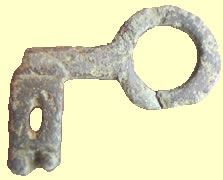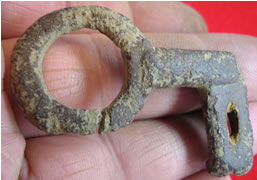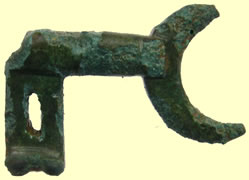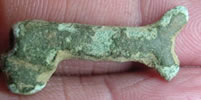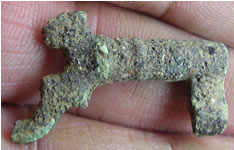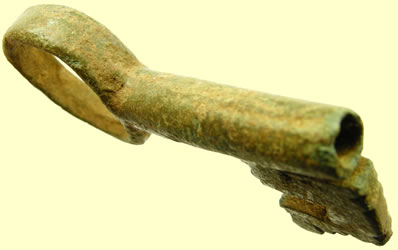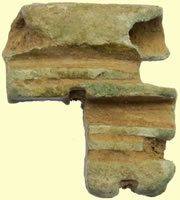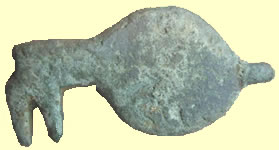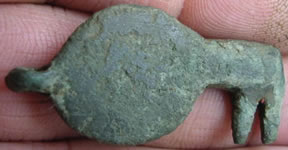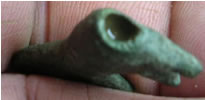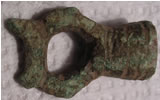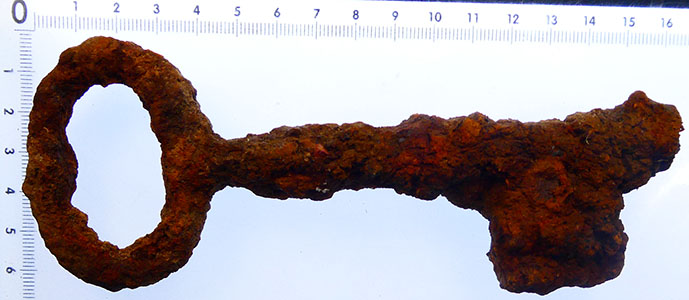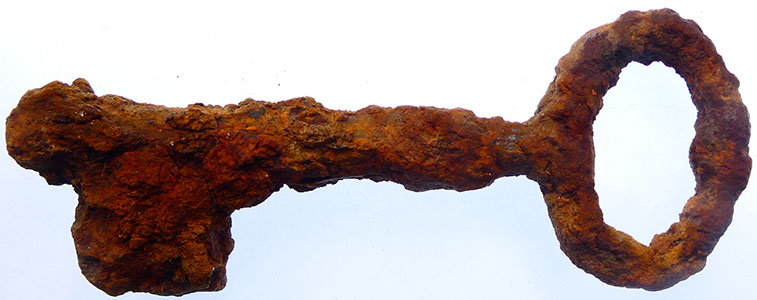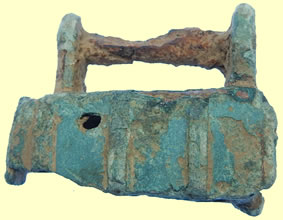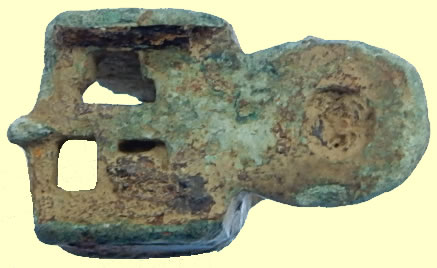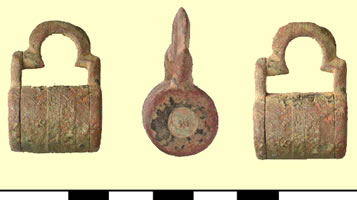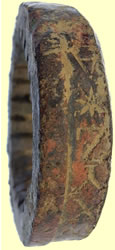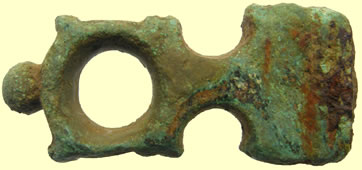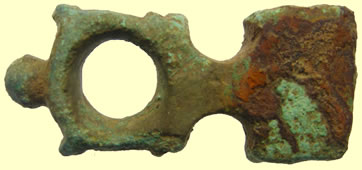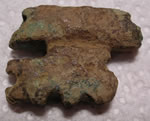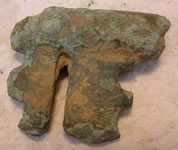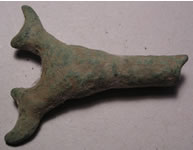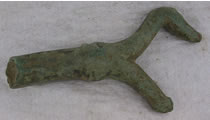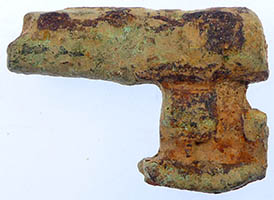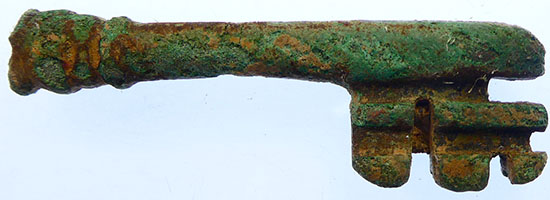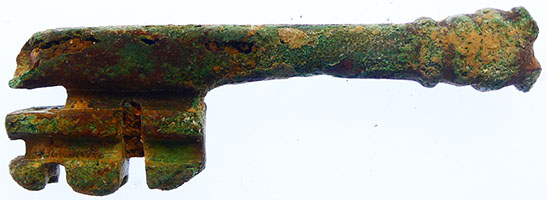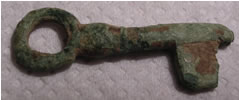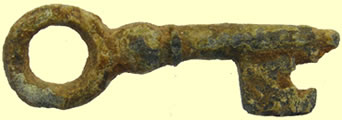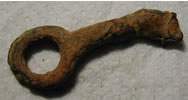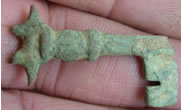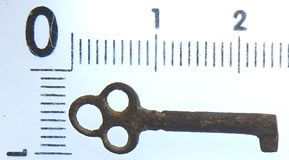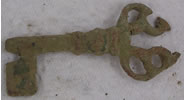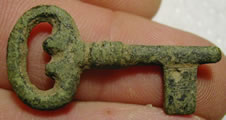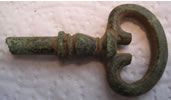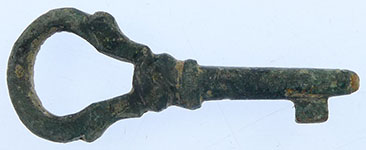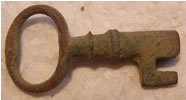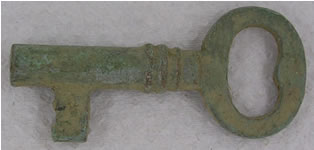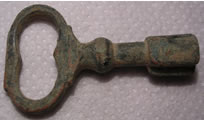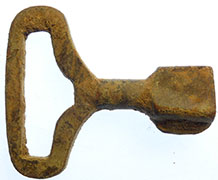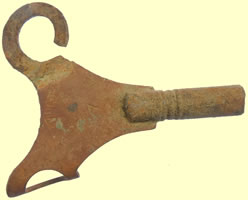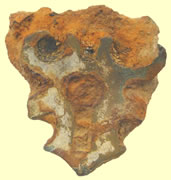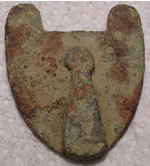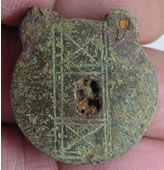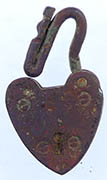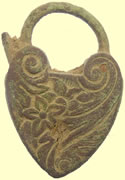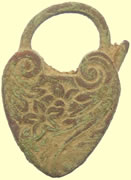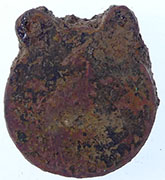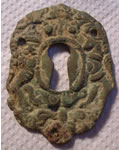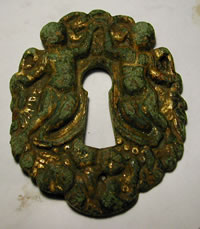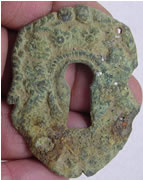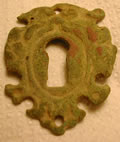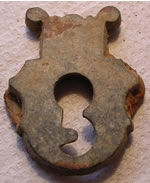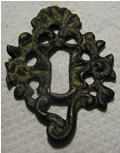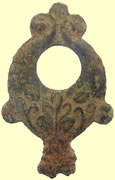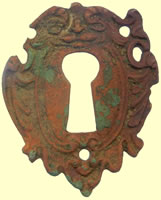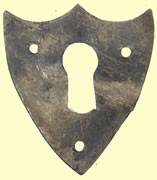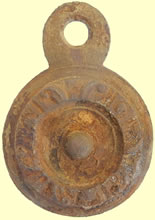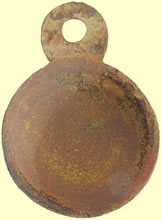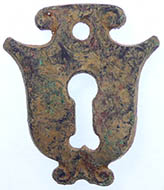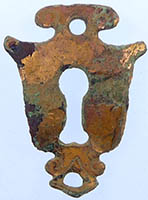

Metal detecting holidays in England with the World's most successful metal detecting club.
Twinned with Midwest Historical Research Society USA
Keys and locks all periods
|
||||||||||||||||||||||||||||||||||||||||||||||||||||||||||||||||||||||||||||||||||||||||||||||||||||||||||||||||||||||||||||||||||||||||||||||||||||||||||||||
Roman 1st to 4thC
1st to 3rd C Roman key ring
Late Roman early Saxon barrel lock 3 cut outs to rear 38mm L x 27.8mm H - 10.06g
Roman key
Roman key |
||||||||||||||||||||||||||||||||||||||||||||||||||||||||||||||||||||||||||||||||||||||||||||||||||||||||||||||||||||||||||||||||||||||||||||||||||||||||||||||
Huge Roman key handles
Roman barrel lock
Roman bronze key
AD 43 -410 Roman key |
||||||||||||||||||||||||||||||||||||||||||||||||||||||||||||||||||||||||||||||||||||||||||||||||||||||||||||||||||||||||||||||||||||||||||||||||||||||||||||||
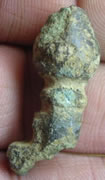  |
||||||||||||||||||||||||||||||||||||||||||||||||||||||||||||||||||||||||||||||||||||||||||||||||||||||||||||||||||||||||||||||||||||||||||||||||||||||||||||||
|
Very unusual Romano/British bronze key with rounded finial handle - one for the museum 10.56g, 31.30mm L x 12.00mm dia
Tiny Roman bronze key ?
Roman latch key |
||||||||||||||||||||||||||||||||||||||||||||||||||||||||||||||||||||||||||||||||||||||||||||||||||||||||||||||||||||||||||||||||||||||||||||||||||||||||||||||
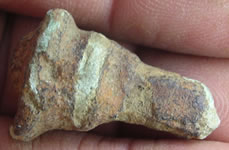 |
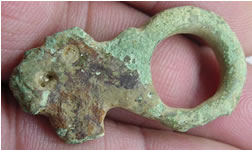 |
|||||||||||||||||||||||||||||||||||||||||||||||||||||||||||||||||||||||||||||||||||||||||||||||||||||||||||||||||||||||||||||||||||||||||||||||||||||||||||||
Roman
bronze lock pin fragment |
Roman key handle |
|||||||||||||||||||||||||||||||||||||||||||||||||||||||||||||||||||||||||||||||||||||||||||||||||||||||||||||||||||||||||||||||||||||||||||||||||||||||||||||
|
||||||||||||||||||||||||||||||||||||||||||||||||||||||||||||||||||||||||||||||||||||||||||||||||||||||||||||||||||||||||||||||||||||||||||||||||||||||||||||||
Roman
bronze decorated latch key with suspension hole 48.26mm L x 8.83mm x
T x 12.45mm H, 17.62g |
||||||||||||||||||||||||||||||||||||||||||||||||||||||||||||||||||||||||||||||||||||||||||||||||||||||||||||||||||||||||||||||||||||||||||||||||||||||||||||||
Interesting 2nd C Roman latch key set up
|
||||||||||||||||||||||||||||||||||||||||||||||||||||||||||||||||||||||||||||||||||||||||||||||||||||||||||||||||||||||||||||||||||||||||||||||||||||||||||||||
Anglo Saxon - Early medieval
|
||||||||||||||||||||||||||||||||||||||||||||||||||||||||||||||||||||||||||||||||||||||||||||||||||||||||||||||||||||||||||||||||||||||||||||||||||||||||||||||
Early Medieval key handle circa AD 900-1100. The attachment end is hollow and rectangular in section. This is attached to an oval plate of openwork design formed by a cross.The four arms of the cross have cast raised longitudinal lines. Both faces of the key handle are decorated in this way. At the apex of the handle is a rectangular projection with a worn break. The object has a reddish brown patina typical of late Early Medieval period. Length 40.25mm, width 31.43mm, thickness of attachment end 8.78mm, thickness of plate 4.88mm, weight 19.8g.
Anglo-Saxon 'Round Bow' Casket Key 10.41g, 40.88mm Lx19.58mm W x 6.30mm T
Viking bronze key handle |
||||||||||||||||||||||||||||||||||||||||||||||||||||||||||||||||||||||||||||||||||||||||||||||||||||||||||||||||||||||||||||||||||||||||||||||||||||||||||||||
Medieval
|
||||||||||||||||||||||||||||||||||||||||||||||||||||||||||||||||||||||||||||||||||||||||||||||||||||||||||||||||||||||||||||||||||||||||||||||||||||||||||||||
Huge medieval key 76.34mm
Medieval iron key
Massive medieval iron key
Medieval barrel locks Locks of one kind or another have been used from ancient times for whenever man acquires desirable possessions there are those who are prepared to steal them. Barrel padlocks are known from at least the Roman period in this country but as they are generally made of iron they are rarely found in good condition. They are also used in the later Saxon and Viking period but again construction in iron means their survival rate is low. A complete 10th century example has however been found in Coppergate, York and it is on display at the Jorvik Viking Centre.1 It is of a larger size with more complex construction and decoration than these later Medieval examples but in general the operating principle remains the same. They consist of two quite separate and detachable parts, one a cylindrical barrel with a bar above and the other the bolt. The bolt is a device with barb-springs that catch internally behind a stop within the barrel and a socket that engages with the external bar over the cylinder. In this position the lock is closed and requires a key to release the mechanism . The key is inserted through an opening, often 'T' shaped, in the end of the barrel . Inserting the key compresses the internal barb-springs to a level below the stops in the cylinder and thus allows the bolt to be withdrawn.
Medieval barrel lock
Medieval combination barrel lock
Medieval barrel lock
Medieval barrel lock key
MEDIEVAL BRONZE QUATREFOIL KEY Circa 14th-15th century AD.
Late medieval lock
|
||||||||||||||||||||||||||||||||||||||||||||||||||||||||||||||||||||||||||||||||||||||||||||||||||||||||||||||||||||||||||||||||||||||||||||||||||||||||||||||
|
MEDIEVAL BRONZE KEY Circa 14th-15th century AD. |
||||||||||||||||||||||||||||||||||||||||||||||||||||||||||||||||||||||||||||||||||||||||||||||||||||||||||||||||||||||||||||||||||||||||||||||||||||||||||||||
Medieval casket keys
|
||||||||||||||||||||||||||||||||||||||||||||||||||||||||||||||||||||||||||||||||||||||||||||||||||||||||||||||||||||||||||||||||||||||||||||||||||||||||||||||
|
||||||||||||||||||||||||||||||||||||||||||||||||||||||||||||||||||||||||||||||||||||||||||||||||||||||||||||||||||||||||||||||||||||||||||||||||||||||||||||||
15thC casket keys |
||||||||||||||||||||||||||||||||||||||||||||||||||||||||||||||||||||||||||||||||||||||||||||||||||||||||||||||||||||||||||||||||||||||||||||||||||||||||||||||
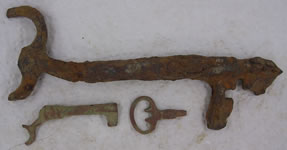 |
||||||||||||||||||||||||||||||||||||||||||||||||||||||||||||||||||||||||||||||||||||||||||||||||||||||||||||||||||||||||||||||||||||||||||||||||||||||||||||||
| Large medieval iron key | ||||||||||||||||||||||||||||||||||||||||||||||||||||||||||||||||||||||||||||||||||||||||||||||||||||||||||||||||||||||||||||||||||||||||||||||||||||||||||||||
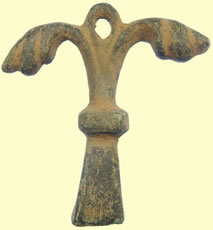  |
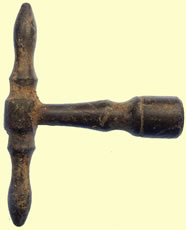 |
|||||||||||||||||||||||||||||||||||||||||||||||||||||||||||||||||||||||||||||||||||||||||||||||||||||||||||||||||||||||||||||||||||||||||||||||||||||||||||||
Unknown bronze medieval item - appears to be a rectangular key of some description with suspension loop Researching it |
Georgian barrel tap key | |||||||||||||||||||||||||||||||||||||||||||||||||||||||||||||||||||||||||||||||||||||||||||||||||||||||||||||||||||||||||||||||||||||||||||||||||||||||||||||
Post medieval casket keys
|
||||||||||||||||||||||||||||||||||||||||||||||||||||||||||||||||||||||||||||||||||||||||||||||||||||||||||||||||||||||||||||||||||||||||||||||||||||||||||||||
Clock keys
|
||||||||||||||||||||||||||||||||||||||||||||||||||||||||||||||||||||||||||||||||||||||||||||||||||||||||||||||||||||||||||||||||||||||||||||||||||||||||||||||
Pad locks
Medieval pad lock
Key hole escutcheons
|
||||||||||||||||||||||||||||||||||||||||||||||||||||||||||||||||||||||||||||||||||||||||||||||||||||||||||||||||||||||||||||||||||||||||||||||||||||||||||||||


